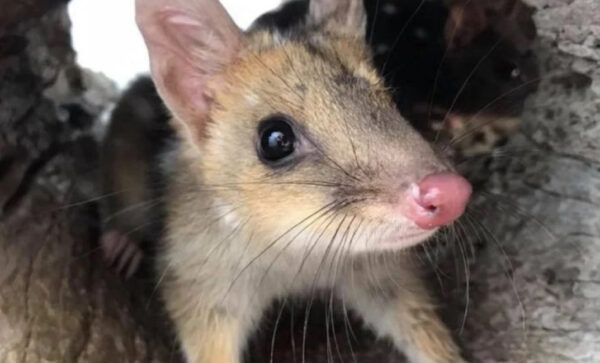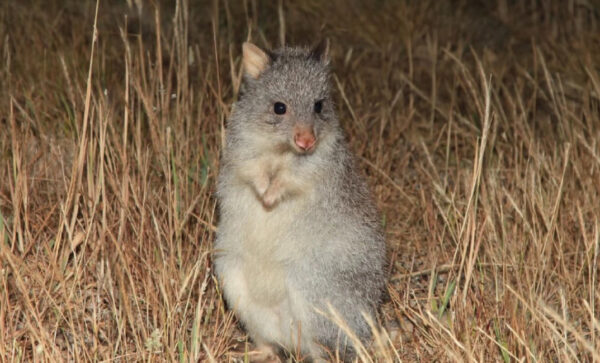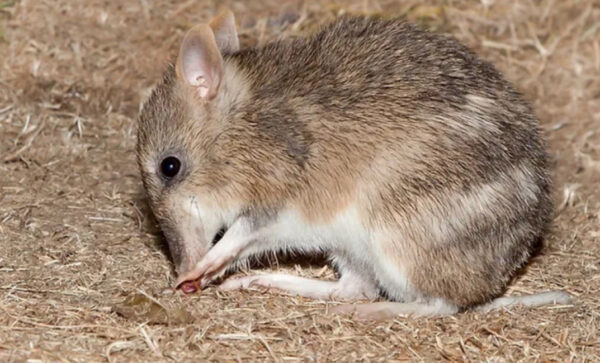What do endangered animals and the royal family have in common?
Occasionally I find myself on the roof of the Sun Theatre, washing our solar panels, helping with some maintenance or taking a photo, (any excuse really…) from which there is a magnificent view of the city to the east, and from the Westgate Bridge clear all the way to the You Yangs, with everything in between being our beloved Westside. Respect.
The You Yangs stand as a proud bookend to the plains of Werribee. Flinders Peak, the highest point at the southern end of the range is a popular walking location, with mountain bike riding also popular, whilst at the northern end is the lesser known Mt Rothwell.
This small mountain was once the northernmost reach of the sprawling Chirnside farming empire that included Werribee Mansion all the way down to Point Cook Mansion and the shores of Port Phillip. Today it is where you will find the Mt Rothwell Biodiversity Centre, one of the shining lights in native animal sanctuaries across Australia and indeed the world – and you can visit for a very unique and special experience.
Founded in 2004, Mt Rothwell Biodiversity Centre is a privately owned and funded conservation reserve that protects the local flora and fauna and operates a program to protect and enhance the population of a number of endangered Australian native animals. The sanctuary is surrounded by an eight-foot high predator-proof fence which keeps foxes and wild cats out, and the burgeoning native animals inside.



It is the largest feral-predator-free ecosystem in Victoria, and has pioneered many of the systems and procedures being used now across the country. The sanctuary relies on a small team of expert staff and a wonderful group of volunteers to maintain the property of nearly 1200 acres, and runs a lauded breeding program.
If you come to visit, you will pass through the hamlet of Little River, along the foothills of the You Yangs, then as you drive along Little River – Ripley Road you will come across kilometres of the unique high fences, which are constructed from a low visual impact mesh that makes looking through to the grasslands beyond quite uninterrupted. (Unlike, for instance, horrible cyclone security fences.) As you look through you will likely see many kangaroos, perhaps even emus or rock wallabies, when you turn to come up Mt Rothwell Road towards the entrance near the top of the hill, you will also spot some dingoes, but lower down amongst the grass, are the real stars of the show.
The nocturnal quolls, bandicoots and bettongs are small native animals that are at various levels of being endangered, but thriving here at the sanctuary. Some have even been able to be sent to other sanctuaries or released into the wild for reestablishing populations, an incredible achievement as a result of the clever and hard work over the last two decades.
The sanctuary is predominantly closed to the public, but on the last Saturday of each month provides twilight evening walks to spot these nocturnal animals rising for the start of their day. I heard about this five years ago, was intrigued and came along to the next evening tour and left fascinated and more than anything, impressed at the incredible program – which is where the royal family comes in.
I learnt that one of the problems faced by an endangered animal family is the breadth of its gene pool. If the pool is too narrow it leads to a downward spiral of the health of subsequent generations, making rehabilitation of a population even harder. The answer, as European royals learnt so many years ago, is to marry someone from another royal family across the English Channel, to bring in some new blood. Huzzah!
Similarly, Mt Rothwell has arranged to bring in a few animals from other parts of Australia; NSW, Canberra and especially Tasmania, can provide fresh genes to breed stronger subsequent generations and in turn have seen the program flourish. During the recent plague, when cinemas were closed and travel became rather difficult, I was pleased to begin to volunteer to assist with transporting quolls, bandicoots, bettongs and wallabies by small plane back and forth across the borders to NSW, ACT and Tassie, which it turns out is now the best way to transport them for their wellbeing.
Talking of cinema, Mt Rothwell has also been a popular place as a film location, most notably the set town of ‘Dungatar’ was built there for the beloved The Dressmaker.
There is a lot of great work going on at Mt Rothwell. If you’d like to visit and see it for yourself, it’s an easy #DeepWest adventure and drive to the You Yangs for a fascinating evening. You can book online via the website www.mtrothwell.com.au or private tours are also possible on other days for groups by contacting info@mtrothwell.com.au. If you really fall in love with the place, you can even offer to volunteer for some fresh air in the westside countryside.

